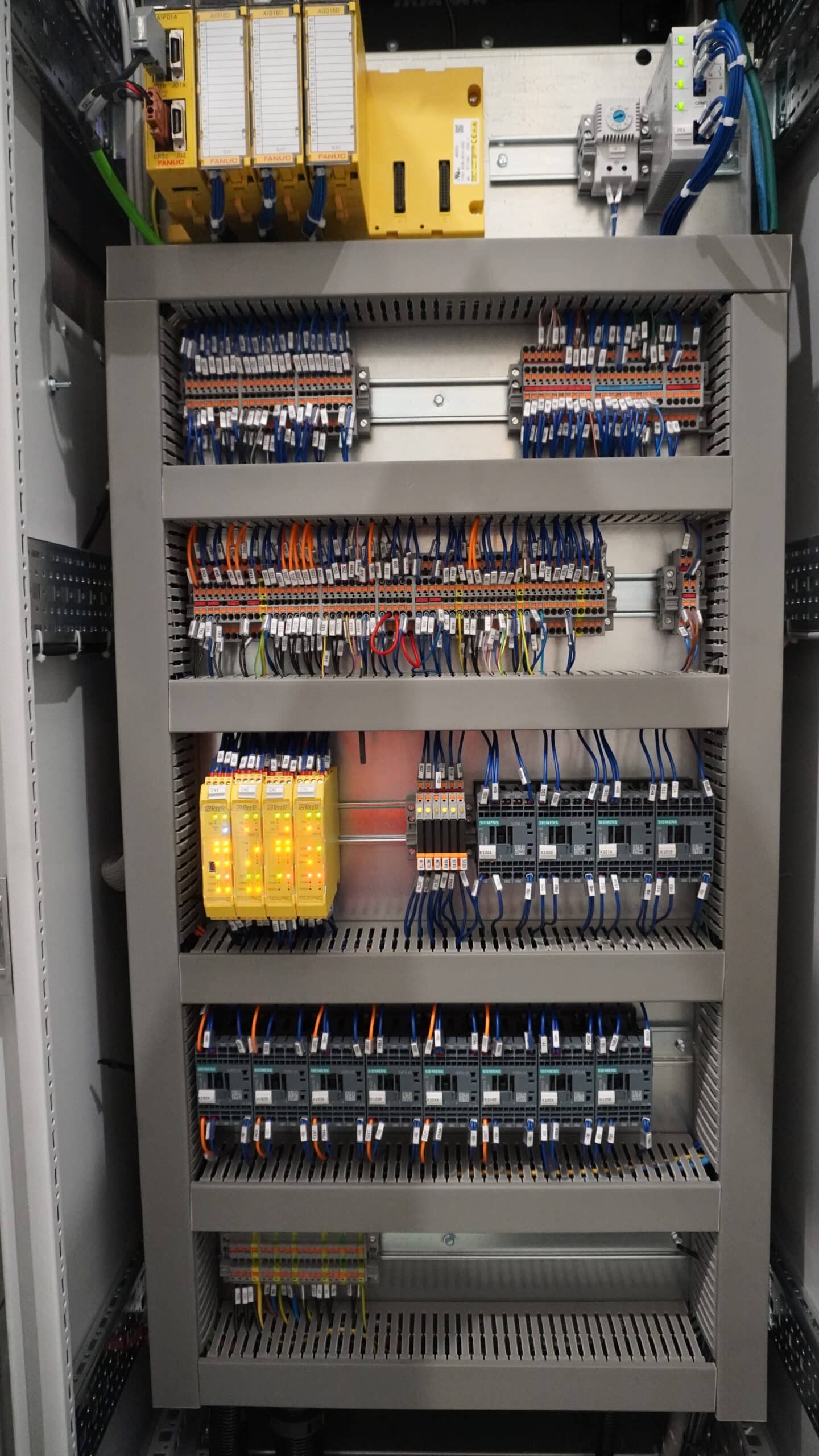Last edit: 06/05/2025
THE DOUBT: to CE mark my Automation Panel, or my Control Panel, shall I do some EMC tests?
CONSIDERATIONS 1:

During the development of the 2016 edition of IEC 60204-1, the team members (IEC/TC44 MT 60204-1) agreed to adopt the so called “Modular Approach”, introduced in 1990s in IEC 60439-1 and then, carried over in the IEC 61439 series.
Hereafter the text from the IEC 60204-1: 2016 edition
[IEC 60204-1: 2016] 4.4.2 Electromagnetic compatibility (EMC)
The electrical equipment shall not generate electromagnetic disturbances above levels that are appropriate for its intended operating environment. In addition, the electrical equipment shall have a sufficient level of immunity to electromagnetic disturbances so that it can function in its intended environment. Immunity and/or emission tests are required on the electrical equipment unless the following conditions are fulfilled:
- the incorporated devices and components comply with the EMC requirements for the intended EMC environment specified in the relevant product standard (or generic standard where no product standard exists), and;
- the electrical installation and wiring are consistent with the instructions provided by the supplier of the devices and components with regard to mutual influences, (cabling, screening, earthing etc.) or with informative Annex H if such instructions are not available from the supplier.
NOTE The generic EMC standards IEC 61000-6-1 or IEC 61000-6-2 and IEC 61000-6-3 or IEC 61000-6-4 give general EMC emission and immunity limits.
In essence, according to the 2016 edition of IEC 60204-1, for Control Panels, no testing is required in case all components are CE marked, in compliance with the EMC directive and they are installed according to the Manufacturer’s instructions. This approach is called the Modular Approach and is also found in the 2020 edition of IEC 61439-1. It will be slightly modified for the 2025 version of the EN IEC 61439-1 and -2.
CONSIDERATIONS 2:
That approach was not accepted once the standard went through the European harmonization process and we were obliged to remove that language, otherwise the IEC 60204-1 would have been harmonised to the Low Voltage directive only!
That is the reason the same paragraph is now so modified:
[EN 60204-1: 2018] 4.4.2 Electromagnetic compatibility (EMC)
The electrical equipment shall not generate electromagnetic disturbances above levels that are appropriate for its intended operating environment. In addition, the electrical equipment shall have a sufficient level of immunity to electromagnetic disturbances so that it can function in its intended environment. Immunity and/or emission tests are required on the electrical equipment unless the following conditions are fulfilled:
NOTE 1 The generic EMC standards IEC 61000-6-1 or IEC 61000-6-2 and IEC 61000-6-3 or IEC 61000-6-4 give general EMC emission and immunity limits.
NOTE 2: Annex H provides examples of measures to reduce the effects of electromagnetic influences
CONSIDERATIONS 3:
The new Machinery regulation does not change the situation. Hereafter the EHSR from the actual Machinery Directive and, just after, from the REGULATION (EU) 2023/1230.
[2006/42 EC] 1.5.11 External radiation. Machinery must be designed and constructed in such a way that external radiation does not interfere with its operation.
[(EU) 2023/1230] 1.5.11. External radiation. Machinery or related products shall be designed and constructed in such a way that external radiation does not interfere with its operation.
CONCLUSIONS: Since the moment the EN 60204-1: 2018 was harmonised, the machinery manufacturer has the obligation, before placing the machinery on the European Market, to run EMC tests. The issue is that, for most machinery, there are no specific EMC standards. EN 55011 is taken as a reference, for all types of machinery, but that is only valid for Machine Tools.
Moreover, the approach detailed in EN 55011 is not recognized by the HAS consultants of the European commission. Hereafter the statement made by one of them in October 2023:
EN 55011:2016 “causes inadequate level of protection to radio services and electromagnetic environment by not keeping up the requirements of generic standards (EN IEC 61000-6-3:2021 and EN IEC 61000-6-4:2019), which should be guidelines for product standard committees. Thus, the lack of defined requirements above 1GHz for equipment covered by the document cannot be accepted. In other words, limiting the requirements to only 1 GHz is not justified in the modern harmonized standard.”
EN 55011 is under revision.